|

|
|
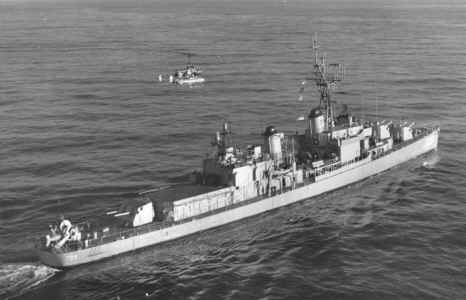 |
As seen at left, a QH-50C DASH approaches the Allen M.
Sumner class destroyer, USS HUGH PURVIS (DD-709), for landing. The
successful deployment of DASH on over 160 U.S. Naval Destroyers, Destroyer
Escorts, Tenders, Cruisers and a Battleship occurred due to the hard work
and dedication of.........
|
.......the Gyrodyne employees who worked at
Gyrodyne building the parts, assembling the drone helicopters, flight
testing the completed system, testing the finished FRAM work at the U.S.
Navy yards to serving on ship as Technical Representatives to insure the
system was operated correctly. THESE were some of the many job
descriptions required for the ONLY deployed and mass produced Vertical
Takeoff and Landing Unmanned Aerial Vehicle (VTOL UAV) program in the
history of modern warfare and Gyrodyne employees, such
as those seen at right in August 1969, made the DASH system
work. The Following is a sample of their Memories of working for
Gyrodyne.
|
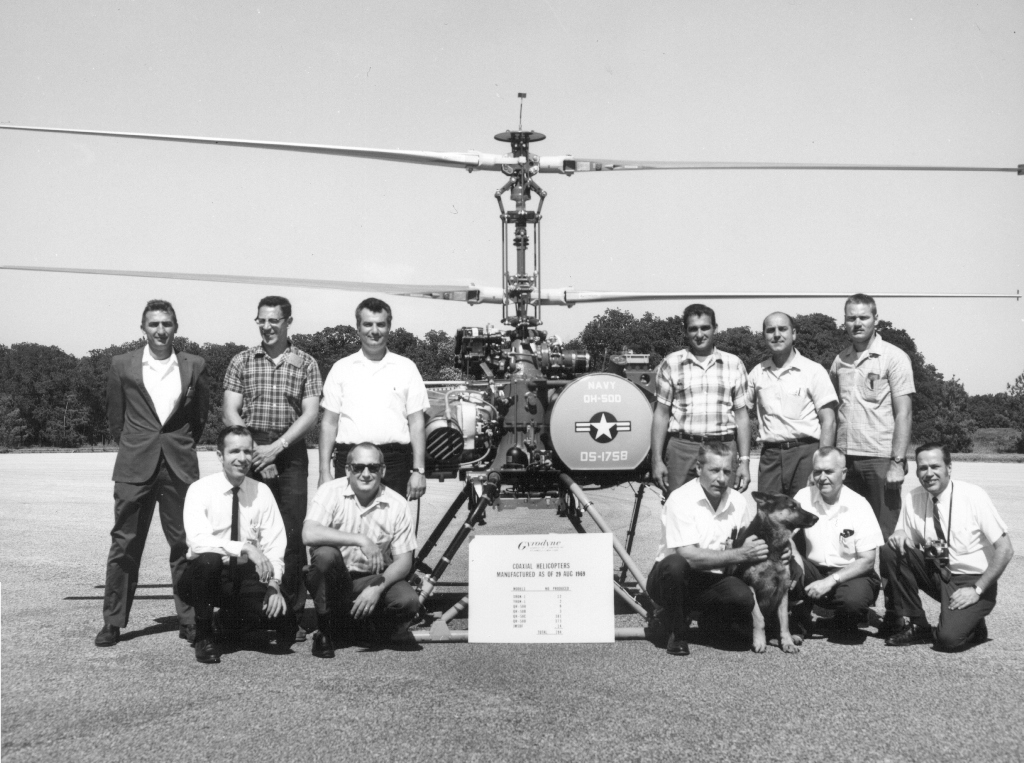 |

|
I was so surprised and
delighted to view the "GYRODYNE' web site. I worked for Gyrodyne at
St. James L. I. as a draftsman from 1963 to 1966. If you've got a moment
here's a short story about my working days at Gyrodyne.
Back in the spring of
1963 1 was a laid-off Jr. Draftsman from Grumman Aircraft. We had just
finished working on a re-draw program for the A-6 Intruder (it was
designated A-2F at the time) and were about to perform a re-draw program
for the E-2A AWACS aircraft, (that was designated at the time W-2F). We
were all "job shopper' draftsman with perhaps a year or two
experience out of work on beautiful Long Island in the spring enjoying an
unexpected "spring break". I had a brand new convertible and had
a ball going to the beach with my buddies every day that we could. Well
after a few weeks of "spring break" my father took things into
his own hands.
My dad was a retired
N.Y.C. policeman who worked as a butcher after he retired at a fairly
young age. He worked for a supermarket called Blue Jays in St. James, L.
I. He waited on a man, Mr. Papadakos, who owned a helicopter company. My
dad would personally cut meat for Mr. Papadakos. My dad mentioned to Mr.
Papadakos that I was an unemployed draftsman and would you know it the
next day, a Saturday, I was interviewed by my future supervisor Mr. Frank Jelly. The interview
went great and after taking a "psychological profile" test, Mr.
Jelly told me I was normal (my wife disagrees) and offered me a position
as a Junior Draftsman at a starting pay of $68 a week. One week later I
was working on the board (drafting board that is) at Gyrodyne. I was 19
years old (got nicknamed "the kid") and was I thrilled to see
the parts and pieces that I drew on paper being manufactured and installed
on the QH-50C's and QH-50D's. I worked on everything from casting drawings
to machining drawings of the castings to sheet metal brackets to pipe
assemblies to functional checking fixtures.
was interviewed by my future supervisor Mr. Frank Jelly. The interview
went great and after taking a "psychological profile" test, Mr.
Jelly told me I was normal (my wife disagrees) and offered me a position
as a Junior Draftsman at a starting pay of $68 a week. One week later I
was working on the board (drafting board that is) at Gyrodyne. I was 19
years old (got nicknamed "the kid") and was I thrilled to see
the parts and pieces that I drew on paper being manufactured and installed
on the QH-50C's and QH-50D's. I worked on everything from casting drawings
to machining drawings of the castings to sheet metal brackets to pipe
assemblies to functional checking fixtures.
One particular
experimental project was the design and installation of a recovery system
that suspended a DASH below the surface of the water by means of a large
inflated balloon if by circumstance the DASH ditched in the ocean. The top
of the inflated balloon had a hook eye attached so a helicopter could
snare it and return the DASH to the ship. This system was tested at the
Brooklyn Navy Ship Yard. They actually dropped a OH-50C from a crane into
the water and the system deployed as designed. I remember the blade shop
and how the blades were laminated and balanced. It was high tech for that
time and possibly even today. I also recall that during the 1963-1966
period that I worked at Gyrodyne, Mr. Papadakos had a friend in charge of
engineering (named Alex Pappas). Also at the same time the Navy rep. was
Commander Shapperty, or simply called "Shep" by his friends. (My
future in-laws knew him). A real nice gentleman. Another thing I remember
was that the Navy decided they wanted to name the QH-50D, so they held a
contest at the plant hoping the people that designed and built the
QH-50’s would come up with a good name. I submitted the name
“Subliminator” but I don't know if any name was officially chosen.
(Some clown submitted "Chicken of the Sea").
My memories of
Gyrodyne are so vivid. I learned so much, I felt I was doing something
important for our nation. The people I worked with I admired for their
skills and inventiveness. Gyrodyne laid the foundation for my working
career.
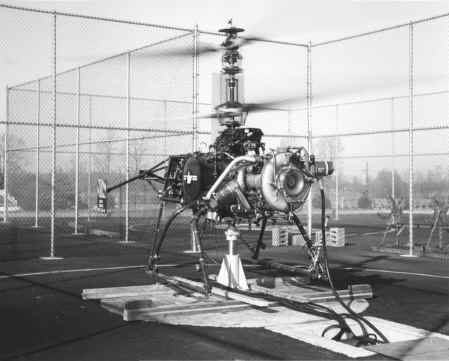 When I left Gyrodyne in 1966 I had just gotten engaged and had received an
offer from Fairchild Republic for compensation so much higher than what I
was earning at Gyrodyne that I really had no choice. (I was earning $82/wk
at Gyrodyne vs. $120/wk Fairchild-Republic offered). The hardest thing was
telling my supervisor and friend Frank Jelly about my decision. Frank did
the best he could by getting me more money to stay, about $3 more a week,
but I had to reject it. On my last day of work at Gyrodyne, July 8, 1966,
my co-workers took me out after work for a one last drink. As I said I was
engaged and the date of July 8,1966, was my future father-law's birthday.
I was to be at his birthday party that evening at 8:00 pm. I was doing
fine at my going away party and explained why I had to leave early because
of the future father-in-law birthday thing. Well I'm out in the
parking lot getting in my car to leave and who shows up late but Frank
Jelly, my supervisor. I explain why I've got to go and he tells me he has
to buy me just one drink. OK, just one!
When I left Gyrodyne in 1966 I had just gotten engaged and had received an
offer from Fairchild Republic for compensation so much higher than what I
was earning at Gyrodyne that I really had no choice. (I was earning $82/wk
at Gyrodyne vs. $120/wk Fairchild-Republic offered). The hardest thing was
telling my supervisor and friend Frank Jelly about my decision. Frank did
the best he could by getting me more money to stay, about $3 more a week,
but I had to reject it. On my last day of work at Gyrodyne, July 8, 1966,
my co-workers took me out after work for a one last drink. As I said I was
engaged and the date of July 8,1966, was my future father-law's birthday.
I was to be at his birthday party that evening at 8:00 pm. I was doing
fine at my going away party and explained why I had to leave early because
of the future father-in-law birthday thing. Well I'm out in the
parking lot getting in my car to leave and who shows up late but Frank
Jelly, my supervisor. I explain why I've got to go and he tells me he has
to buy me just one drink. OK, just one!
Having just that
one drink I get into a conversation with an eccentric genius who worked at
Gyrodyne as a designer/machinist and he starts telling me about a replica
Fokker D-VII that he's building in his barn. To this day I can't remember
his name, The only thing I remember after that was 3 hrs. later when I got
home at my parents house feeling no pain the door-bell rang, my mom called
me to the door, my mom left and my fiancée with my future father-in-law
sitting in the car proceeded to throw my engagement to her at me. To this
day I can still remember this ring heading straight at me. We were
un-engaged for about 3 weeks and were married the following Sept. Still
married two kids, two grandchildren and many animals later I still
remember those GREAT days in Flower Field working on the
"Sub-liminators"
Sincerely,
Tom Romano, Schenectady, NY |

|
My Gyrodyne
Years
By Lloyd Lilley, Field Services Representative (1963-1969)
I was employed by the Engineering Research Corporation (ERCO) of
Riverdale, MD, working with the naval training devices center in
Jacksonville, Florida. In April of 1963, I happened to notice an
interesting newspaper advertisement by Gyrodyne Company of America, Inc.,
recruiting personnel for the Navy's DASH (Drone Anti-Submarine Helicopter)
program. I made an appointment for an interview at that time and
subsequently met with Art McCarthy, the head of the field-engineering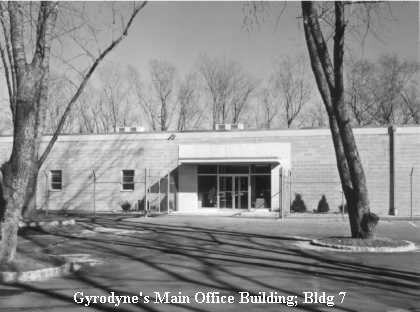 department. I submitted my
resume, completed the interview, and received an offer of employment about
one week later. I reported to Gyrodyne in St. James, New York during the
first week of May 1963. department. I submitted my
resume, completed the interview, and received an offer of employment about
one week later. I reported to Gyrodyne in St. James, New York during the
first week of May 1963.
During the first few days at Gyrodyne, I went through the normal "new
employee" check-in procedures and was thereafter assigned a desk in
the field-engineering department. A formal classroom training programming
was not in existence at the time and it was left up to me to begin
familiarizing myself with the entire program and its components simply
from the available manuals and other materials on hand. I was given a
great deal of help from the field engineering office personnel, and I am
sure my barrage of questions at times would annoy them. They did however
suffer through my learning period without ever showing any displeasure.
It was during this learning period that I began to "earn my
keep" so to speak. Starting with correcting simple typographical
errors in maintenance manuals and progressing to writing manual revisions
as directed by the engineering department, I began writing step-by-step
assembly, disassembly and repair instructions for the electronics
equipment associated with the drone being manufactured by Gyrodyne.
My family was still living in Jacksonville during ties period, leaving me
with a great deal of spare time, both in the evenings and on the weekends.
Having little else to do, I used this free time to enhance my knowledge of
the DASH program and to complete my assigned tasks. Actually, I was
enjoying my work more and more as I learned my way around Gyrodyne. After
a while, I felt so confident that I placed a small sign on the wall beside
my desk that read, “I can do it. Give it to me”. I am afraid I
made a mistake, as I was suddenly inundated with things to do. No matter,
I enjoyed the challenge. The existence of my little sign however, had
spread throughout the building and I must say that I endured more than a
little good-natured kidding for some time.
I had been introduced to Gordon Bolser, a company Vice President,
during my first week at Gyrodyne, and I accidentally ran into him at
dinner one evening. Gordon was aware of the existence of my little sign,
and I am sure he wondered if it had any real significance.
After a
couple of pre-dinner cocktails, be asked me what I was doing at Gyrodyne,
what my goals were, and my overall intent. My immediate reply was, "I
have come here to take your job". The next few moments were a little
scary. I thought I may be fired, but after pausing and having another sip
of his drink, he replied, " Lilley, that's the most marvelous damn
statement I’ve heard in years. Good luck to you".
I suppose
Gordon wanted to "put me in my place" so to speak, and he came
to my desk on Thursday prior to Memorial Day with the following challenge.
As he explained, new employees with fewer than ninety days with Gyrodyne
were not permitted to be absent from work on the day before or the day
after a holiday, except for reasons of illness or company business. In
other words, no personal time off was allowed. Gordon informed me that he
was departing LaGuardia at 3:30 p.m. that afternoon for Jacksonville to
visit his family for the holiday weekend. To test my resourcefulness as he
put it, I was to in some manner, whatever I could come up with, take the
same flight with him to Jacksonville that afternoon and return to Gyrodyne
on Tuesday following Memorial Day without violating company policy.
Further, I was to make the trip at no cost to myself. His last statement
was, "I want to see if that sign of yours means what it says, at
least that "I can do it" part". " I’ll see just now
how damn good you are".
As Gordon
walked away, I knew I would need help with this one. After pondering my
situation for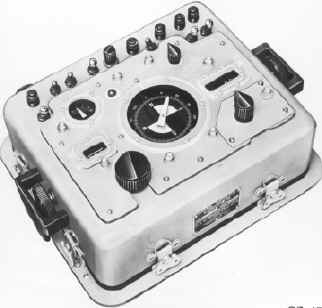 a few minutes, I realized that my only hope was to get others involved. I
took my situation to Art McCarthy and Tom Wilson (field service financial
advisor). For some unknown reason, they immediately assumed Gordon’s
challenge on my behalf. In less than an hour, I not only had reservations
on Gordon’s flight, but I had the seat next to him reserved. It seemed
that there was a ship in port in Mayport, Florida that had recently
completed the FRAM (Fleet Rehabilitation and Modernization) program, but
many equipment serial numbers were missing from Gyrodyne’s files. As
prime contractor, it was necessary that Gyrodyne obtain these serial
numbers immediately. That was my assigned mission.
a few minutes, I realized that my only hope was to get others involved. I
took my situation to Art McCarthy and Tom Wilson (field service financial
advisor). For some unknown reason, they immediately assumed Gordon’s
challenge on my behalf. In less than an hour, I not only had reservations
on Gordon’s flight, but I had the seat next to him reserved. It seemed
that there was a ship in port in Mayport, Florida that had recently
completed the FRAM (Fleet Rehabilitation and Modernization) program, but
many equipment serial numbers were missing from Gyrodyne’s files. As
prime contractor, it was necessary that Gyrodyne obtain these serial
numbers immediately. That was my assigned mission.
I arrived at
LaGuardia that afternoon, making certain that I kept out of Gordon’s
view. I allowed all passengers to board ahead of me and only at the last
boarding call did I venture aboard the aircraft and take my seat next to
him. As I slid across him to my window seat, I heard him mumble,
"You’re pretty damn good”.
It was
during this period that I had the opportunity to meet Peter J. Papadakos,
principle owner and founder of Gyrodyne Company of America for the first
time. Art McCarthy introduced us at my desk. Peter took note of my little
sign, welcomed me aboard, and congratulated me on the job I had been
doing. We spent a few minutes talking about the progression of the DASH
program and the direction he hoped it would take. He was very encouraging
as he explained some of the upcoming opportunities that might be offered
Gyrodyne. My immediate impressions were of a man forceful, a man
competent, a man focused, and a man dedicated to the successful completion
of the project at hand. Although I had only a few additional face-to-face
meetings with Peter, my views of the man never wavered. He always seemed
very consistent in his demeanor, thereby, I think, lending leadership and
encouragement to all his employees.
I continued
my aforementioned duties in the field service office for the remainder of
the summer months. I was at one point offered a permanent position in the
field service office, but I respectfully declined the offer, as I had had
the opportunity to meet Robert (Bob) Beyer that summer, and it was
suggested that I was designated to replace him in San Diego when be was
transferred to Japan. Warm weather and southern California seemed ideal to
me, and I was particularly pleased when the above suggestion was
confirmed. To that end, I was sent to the Patuxent river flight test
center for a period of about one month before being sent to San Diego
during the first week in October 1963.
There were several
ships in and entering the FRAM (Fleet Rehabilitation and Modernization)
program during this period. A great number of mistakes were being made in
the physical layout of the DASH related equipment. In particular, it
seemed, the foul weather restraint system was being miss-installed on
about every ship in the program. It became a costly item, both time and
money wise. To help alleviate this problem, it was decided to visit each
ship in the FRAM program on the west coast on a regular basis in an
attempt to have the DASH equipment installed correctly at the onset. A
great majority of my time in San Diego was spent in visiting shipyards
from Seattle to Long Beach, making certain the designers and builders were
aware of the specific dash requirements.
In May of 1964, I was directed to proceed to the Pearl Harbor Naval
Shipyard to do an initial inspection of the USS RADFORD (DD-446), which
was midway through the FRAM program. We were very fortunate to have
visited this ship at this time. There was very little in the way of DASH
related equipment that had been installed correctly. It required about ten
days of collaboration with the engineering department at the Pearl Harbor
naval shipyard to advise them of and show them the mistakes that had been
made and the corrections required. It was a trip well spent.
Shortly after my
return from Pearl Harbor, it was decided to locate a DASH support team
there. I was fortunate enough to be asked to relocate to Pearl Harbor in
July of 1964. Needless to say, there was no hesitation on my part.
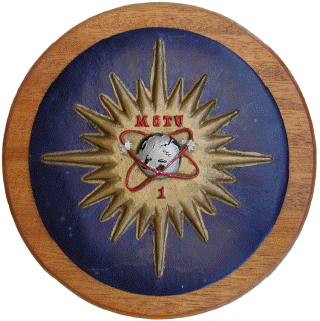 I reported
to Mobile Technical Unit One (MOTU 1) on July 2, 1964. An additional
Gyrodyne representative reported to MOTU 1 about one week later, and
representatives from Babcock Electronics and Boeing about two weeks
thereafter, completing the DASH contingent in Hawaii. MOTU 1 was a part of
COMSERVPAC (Commander Service Forces Pacific Fleet), and consisted of both
military and civilian personnel who provided technical services and
assistance to all naval forces in the mid pacific area. The group
consisted of about twenty military and civilian personnel that formed a
rather close-knit group, both personally and professionally. All were
quite eager to assist each other in any way possible. The DASH program and
the innovative QH-50 drone, being the "new kid on the block",
sparked quite an interest, and required hours of explanation. Many
representatives from other companies took the opportunity to ride various
DASH ships on days when operations were going to be conducted just to view
the uniqueness of the system.
I reported
to Mobile Technical Unit One (MOTU 1) on July 2, 1964. An additional
Gyrodyne representative reported to MOTU 1 about one week later, and
representatives from Babcock Electronics and Boeing about two weeks
thereafter, completing the DASH contingent in Hawaii. MOTU 1 was a part of
COMSERVPAC (Commander Service Forces Pacific Fleet), and consisted of both
military and civilian personnel who provided technical services and
assistance to all naval forces in the mid pacific area. The group
consisted of about twenty military and civilian personnel that formed a
rather close-knit group, both personally and professionally. All were
quite eager to assist each other in any way possible. The DASH program and
the innovative QH-50 drone, being the "new kid on the block",
sparked quite an interest, and required hours of explanation. Many
representatives from other companies took the opportunity to ride various
DASH ships on days when operations were going to be conducted just to view
the uniqueness of the system.
The first
major "happening" in Pearl Harbor was the SQT (ship's
qualification trial) of the USS RADFORD (DD 446) after it finally
completed the FRAM program. Having little else to occupy our time, other
than an occasional transient DASH ship from the west coast, the DASH group
was able to give the USS RADFORD a complete and thorough checkout prior to
the arrival of the SQT team of representatives from the west coast. This
team of representatives, again, consisted of representatives from various
companies involved in the DASH program, and led by a civil service
employee. Their task was to have the USS RADFORD demonstrate their ability
to operate the DASH weapons system to its fullest extent, and upon
successful completion, certify that ship ready to deploy with DASH as a
part of its’ capabilities.
During these
trials, the local DASH team, including myself, was asked to remain ashore,
as it was felt that the SQT team could better perform their duties if only
members of that team were aboard. I could understand the logic of that
request, and I advised the members of my team to honor the aforementioned.
As a result, I was never exactly sure what had occurred when the RADFORD
returned to port on their first day of trials with a severed umbilical
cable, potentially delaying the trials for some time due to other
scheduled post-FRAM trials facing the ship. The ship's captain was
particularly upset with prospects of a possible two-month delay in
completion of the SQT, and he placed a call to MOTU 1 requesting my
presence aboard the ship to discuss the possibilities of repair. Splicing
of the cable was not an option, as the alloy of certain wires in the cable
required silver soldering, an operation that called for temperatures of
around two thousand degrees which would surely damage other parts of the
cable.
After
exhausting all possibilities of repairing the cable, it struck me that
another ship was at the time undergoing FRAM at the Naval Shipyard.
Perhaps the umbilical cable for that ship's DASH installation was on hand.
As good fortune would have it, the cable was found after several hours of
searching in various warehouses with the help of shipyard personnel.
Arrangements were made to borrow this cable and to have it replaced as
soon as possible, and beginning late in the evening, I removed the old
cable from the associated junction box and replaced it with the new one.
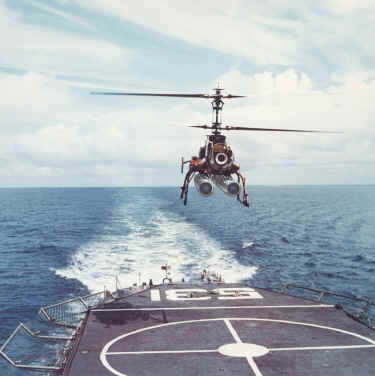 It was a long night, but by reveille, the cable had been replaced,
thoroughly checked out, and was declared ready to be used. Much to the
amazement of the SQT team, the ship was ready to resume trials by 9:00
a.m. Trials did resume that
day and came to a successful completion on schedule. At the Captain's
insistence however, I was to be aboard the ship for the remainder of the
trials. It all worked out to everyone's satisfaction.
It was a long night, but by reveille, the cable had been replaced,
thoroughly checked out, and was declared ready to be used. Much to the
amazement of the SQT team, the ship was ready to resume trials by 9:00
a.m. Trials did resume that
day and came to a successful completion on schedule. At the Captain's
insistence however, I was to be aboard the ship for the remainder of the
trials. It all worked out to everyone's satisfaction.
The RADFORD began
to log considerable flight time. The Captain had become quite a DASH
proponent and he insisted that the ship become proficient in the use of
the system. Whenever possible they operated with submarines in the area,
engaging them in mock ASW operations. At other times they simply flew,
coordinating the operations of the tracking radar, the combat information
center (CIC) and the ship's sonar. Having been issued a standing
invitation by the Captain to come aboard and participate in any of the
ship's operations, I was present during most of the time that they were
engaged in the aforementioned operations, and it was during one of these
operations that I mentioned to the Captain the existence of an airborne
detection device known as M.A.D. (magnetic anomaly detection).
I was
familiar with the equipment, having operated it during my own tenure in
the Navy as a member of a blimp squadron flight crew. We together surmised
how great it would be to have this equipment aboard the QH-50 drone, and
to utilize that combination to sweep areas ahead of convoys for instance,
and to further utilize the combination to localize and to pinpoint
submarine contacts. But, alas, there was no process known to either of us
that would allow the results of a MAD contact to be transmitted from the
QH-50 to the ship's combat information center. We did visualize however,
the possibilities of long-range submarine detection utilizing the QH-50 as
a detection platform. As we continued to consider the possibilities, my
thoughts returned to my own days in the Navy, and I recalled using a
passive Sonobuoy System for listening to underwater sounds made by a
submarine.
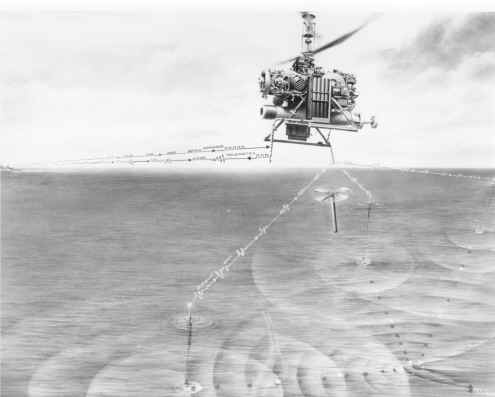 As seen at right, by dropping channelized Sonobouys in a known array, one could track
a submarine simply by
comparing the sound levels at the various Sonobouys. In other words, the
submarine was closest to the Sonobuoy that presented the highest audio
level. As archaic as it was at the time, I felt that it might be of
considerable value to a ship whose sonar was able to detect underwater
objects only a few thousand yards away. I also knew that this old passive
system had been long since replaced by a far more accurate and
sophisticated system known as “JEZEBEL”. It came to mind that we might
be able to obtain some of the older Sonobouys along with the associated
receiving equipment, for a simple “give it a try” project. Captain
Wettlaufer of the USS RADFORD
and I traveled to the Naval Air Station, Barbers Point, Hawaii, to
investigate the possibility of obtaining the aforementioned equipment.
Upon arriving at Barbers Point, we accidentally ran into a Navy pilot
(Commander "Red" Clayton) with whom I had flown during my years
in the Navy. After explaining our mission, Commander Clayton, being quite
familiar with the system we were attempting to obtain, became quite
instrumental in resolving our problem. He immediately led us to a storage
area where we found a “cache” of both SSQ-2 Sonobouys and the
associated receiving equipment. He even assisted us in making arrangements
to “borrow” some of this equipment, and we left Barbers Point with
everything we needed to make some initial tests.
As seen at right, by dropping channelized Sonobouys in a known array, one could track
a submarine simply by
comparing the sound levels at the various Sonobouys. In other words, the
submarine was closest to the Sonobuoy that presented the highest audio
level. As archaic as it was at the time, I felt that it might be of
considerable value to a ship whose sonar was able to detect underwater
objects only a few thousand yards away. I also knew that this old passive
system had been long since replaced by a far more accurate and
sophisticated system known as “JEZEBEL”. It came to mind that we might
be able to obtain some of the older Sonobouys along with the associated
receiving equipment, for a simple “give it a try” project. Captain
Wettlaufer of the USS RADFORD
and I traveled to the Naval Air Station, Barbers Point, Hawaii, to
investigate the possibility of obtaining the aforementioned equipment.
Upon arriving at Barbers Point, we accidentally ran into a Navy pilot
(Commander "Red" Clayton) with whom I had flown during my years
in the Navy. After explaining our mission, Commander Clayton, being quite
familiar with the system we were attempting to obtain, became quite
instrumental in resolving our problem. He immediately led us to a storage
area where we found a “cache” of both SSQ-2 Sonobouys and the
associated receiving equipment. He even assisted us in making arrangements
to “borrow” some of this equipment, and we left Barbers Point with
everything we needed to make some initial tests.
I first
took the equipment to the MOTU 1 electronics shop, as it needed to be
modified somewhat to operate aboard ship (it needed a different power
supply). After crossing this minor hurdle, I modified the Sonobuoy to
operate on shop power, released the underwater transducer, and we had a
transmitting and receiving device that became quite a novelty at MOTU 1.
My next step was to install the receiving equipment aboard the
RADFORD. The antenna for the equipment needed to be installed as high on
the mast as possible, and Captain Wettlaufer gladly supplied personnel to
assist
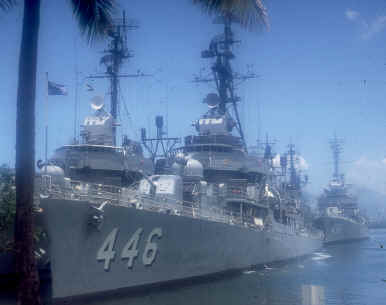 me in the installation of the antenna and the associated coaxial
cable to the receiving equipment, which we mounted in a "cubby
hole" amidships on the main deck. With the receiving equipment in
place, I again checked the reception by operating the Sonobuoy from shore
power (connected to my car's battery), while driving around the naval
base. Again, our system seemed to be doing as we expected. We were now
looking forward to our first trial at sea. me in the installation of the antenna and the associated coaxial
cable to the receiving equipment, which we mounted in a "cubby
hole" amidships on the main deck. With the receiving equipment in
place, I again checked the reception by operating the Sonobuoy from shore
power (connected to my car's battery), while driving around the naval
base. Again, our system seemed to be doing as we expected. We were now
looking forward to our first trial at sea.
The first
actual trial of our new found system was accomplished by simply dumping a
Sonobuoy over the side, waiting for it to activate (this took a few
minutes), and then listening to the sounds our own ship made as we
increased and decreased the distances between the ship and the Sonobuoy.
Needless to say, a great number of shipboard personnel used the headphones
to listen within the next couple of hours. We did back away from the
Sonobuoy at one point for a distance of about three miles while an
accompanying vessel made a close pass on our Sonobuoy. This too went quite
well and we returned to port with a great deal more enthusiasm than
before.
Our next
step was to devise a means of delivering Sonobouys via the QH-50. With a
small and almost insignificant modification to an existing bomb rack, I
devised a means of mounting and delivering four Sonobouys anywhere within
range. This did however reduce the torpedo load to one torpedo rather than
two.
At this
juncture, the RADFORD was about to deploy to the Far East for a period of
six months. Higher naval authorities in the mid pacific area had expressed
considerable interest in the Sonobuoy delivery system and its
possibilities, and I was directed to accompany the RADFORD to Subic Bay in
the Philippines and to continue our testing during the transit. The
decision to send me with the RADFORD was finalized only two hours prior to
departure, and I was unable to make the departure time. However, I boarded
a MATS (Military Air Transportation System) flight the next morning and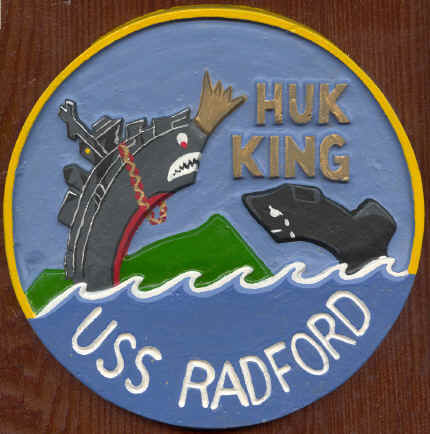 the RADFORD picked me up at Midway Island the next day. Two other ships
and one submarine, all out of Pearl Harbor, accompanied us and it was our
intent to practice our delivery and detection techniques for the next few
days. However, Mother Nature intervened in the form of a very violent
three-day storm, forcing us to curtail all operations. The storm was so
violent that one ship in our company sustained a cracked hull,
contaminating its fuel tanks, and eventually requiring that it be towed
into Guam. Considerable underway repairs to the RADFORD were required
after leaving Guam, and this fact prevented us from performing any of our
planned tests with the DASH system. I was able to assist the RADFORD in
several repairs in other areas however, and to this extent, it was not a
totally wasted trip. I departed the RADFORD in Subic Bay and made my way
back to Pearl Harbor.
the RADFORD picked me up at Midway Island the next day. Two other ships
and one submarine, all out of Pearl Harbor, accompanied us and it was our
intent to practice our delivery and detection techniques for the next few
days. However, Mother Nature intervened in the form of a very violent
three-day storm, forcing us to curtail all operations. The storm was so
violent that one ship in our company sustained a cracked hull,
contaminating its fuel tanks, and eventually requiring that it be towed
into Guam. Considerable underway repairs to the RADFORD were required
after leaving Guam, and this fact prevented us from performing any of our
planned tests with the DASH system. I was able to assist the RADFORD in
several repairs in other areas however, and to this extent, it was not a
totally wasted trip. I departed the RADFORD in Subic Bay and made my way
back to Pearl Harbor.
I spent the
next few months assisting the Pearl Harbor Naval Shipyard with the FRAM
program, and readying newly FRAM’d ships for their SQTs, in addition to
providing assistance to transient west coast ships deploying with DASH
aboard. It was during this period that I began to consider the possibility
and feasibility of integrating the true airborne “JEZEBEL” system into
the DASH program. Upon the RADFORD’s return from deployment, I presented
my ideas to Captain Wettlaufer, and he again actively pursued the
possibilities. My limited knowledge of the true “JEZEBEL” system and
its full capabilities dictated that we enlist the aid of naval air
personnel to answer some of our questions. With new plans and a great deal
of enthusiasm, we approached a ranking Admiral at Pearl Harbor, where
Captain Wettlaufer expressed our desire to create our own “Destroyer
Jezebel”, or “DESJEZ” system. This Admiral was already familiar with
the work we had done with the SSQ-2 Sonobouys, and he himself became a
proponent for the development of a true “Destroyer Jezebel” system. I
do recall his being somewhat bewildered at the fact that the surface navy
had never been offered, or never even knew of a system called
“JEZEBEL” with its seemingly advanced capabilities, and it honed his
interest even more. His many inquiries and requests, some reaching as far
as Washington, for true “JEZEBEL” equipment for testing aboard the USS
RADFORD, were all met with one simple explanation: “unavailable”.
After exhausting all avenues of procurement, sadly to say, the attempt to
further develop the "DESJEZ" system in Hawaii was terminated.
It was noted
that we were perhaps “too far from Washington to be involved in such
development activities”. I had been directed from the onset to provide a
weekly progress report to the field service office of Gyrodyne concerning
activities related to the development of the DESJEZ system. I did provide
this information via the officer- in-charge of MOTU 1, and I am sure the
field service office received it. Apparently, Gyrodyne was unable to gain
further support for the development of “DESJEZ”, as I am sure they
must have tried. I did receive considerable “moral” support from that
end.
After the
demise of “DESJEZ” in Hawaii, I did have the opportunity to explore at
least one other alternate use of the DASH weapon system. I was approached
by a fellow MOTU 1 Western Electric Representative whose area of expertise
was the fire control and QH-50 tracking radar. This representative had
discovered several older and presently unused airdropped radar beacon
transmitting devices, stored in a warehouse aboard a marine base in
Kaneohe, Hawaii. It seemed that the Western Electric Representative was
the only person around who knew anything about the use of the device,
which, when dropped from an aircraft, simply opened and up righted itself
and began transmitting a radar beacon signal that could be detected by the
fire control radar aboard ship, knowing the exact location of and distance
to the radar beacon, would allow the fire control radar to offset the
ship's guns and fire them with deadly accuracy. Once the beacon was
dropped and activated, its capabilities were available to any ship. Our
intent was to devise a means of dropping the beacon from the QH-50 drone,
and to this end, we were invited to demonstrate the use of the beacon at
the firing range on the island of Kahoolawe. The beacon was manually
placed and activated for these trials, and the first attempt to use it
proved to be far more successful than anyone had imagined.
We were then
directed to continue immediately with devising a means of delivering the
beacon via the QH-50, but when Navy officials requested more of the
beacons for our program it was discovered that they had all been
transferred for use in the Far East. No more beacons were available to us.
Thus, again, efforts to develop additional roles for the QH-50 were
thwarted. No further developments in this area were pursued.
The Vietnam
conflict had grown considerably, and the next several months were spent
assisting a great number of DASH equipped ships in transit to and from the
Far East. In order to make myself more available to these transient ships,
I was transferred from MOTO 1 directly to the offices of Destroyer
Flotilla Five at the Pearl Harbor Naval Station. DESFLT Five felt they
could more effectively utilize my services if I were assigned directly to
their office.
I was subsequently recalled to Gyrodyne, St. James, New York to
discuss the development work I had done with "DESJEZ", and to
attend an introductory seminar in the Boston area concerning “SNOOPY”
(reconnaissance variant of the QH-50 equipped with real-time TV cameras).
A number of “SNOOPY” equipped ships from the west coast had begun to
deploy to the Far East with the system on board, and it was necessary that
I gain some expertise in this new area. This was a fortunate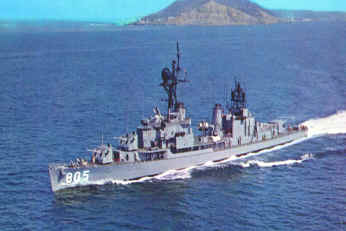 occurrence,
as I was shortly thereafter directed to Japan and subsequently to Subic
Bay in the Philippines to board the USS CHEVALIER (DD-805), a “SNOOPY” equipped
ship headed for the Vietnam area for a period of approximately ten days of
trials with “SNOOPY”. Those ten days was extended to thirty-two days,
and we had the opportunity to gain some notable successes with the system.
Our target location, gunfire spotting, and immediate battle damage
assessment were greatly enhanced by the “SNOOPY” system. On at least
one occasion we were able to locate, identify, and direct Air Force
aircraft to targets with amazing results. We experienced no major problems
with the “SNOOPY” equipment or trials. Nearing the end of our stay in the area, however, we did
experience the loss of one QH-50, due apparently to enemy gunfire. We
retrieved another of our aircraft that had sustained in-flight damage from
enemy gunfire, damage in the form of several bullet holes in the rotors.
Our trials had ended successfully however, and we were relieved on station
by another “SNOOPY” equipped ship on the day following. I departed the
USS CHEVALIER in Taiwan a few days later and returned to Japan for a
debriefing conference, and eventually to my normal duties in Pearl Harbor.
Although I had spent some time in the Navy myself, I realized that I had
never gotten aboard a ship, nor had I ever gotten into a shooting war
until I became a civilian. I felt it to be a little ironic. occurrence,
as I was shortly thereafter directed to Japan and subsequently to Subic
Bay in the Philippines to board the USS CHEVALIER (DD-805), a “SNOOPY” equipped
ship headed for the Vietnam area for a period of approximately ten days of
trials with “SNOOPY”. Those ten days was extended to thirty-two days,
and we had the opportunity to gain some notable successes with the system.
Our target location, gunfire spotting, and immediate battle damage
assessment were greatly enhanced by the “SNOOPY” system. On at least
one occasion we were able to locate, identify, and direct Air Force
aircraft to targets with amazing results. We experienced no major problems
with the “SNOOPY” equipment or trials. Nearing the end of our stay in the area, however, we did
experience the loss of one QH-50, due apparently to enemy gunfire. We
retrieved another of our aircraft that had sustained in-flight damage from
enemy gunfire, damage in the form of several bullet holes in the rotors.
Our trials had ended successfully however, and we were relieved on station
by another “SNOOPY” equipped ship on the day following. I departed the
USS CHEVALIER in Taiwan a few days later and returned to Japan for a
debriefing conference, and eventually to my normal duties in Pearl Harbor.
Although I had spent some time in the Navy myself, I realized that I had
never gotten aboard a ship, nor had I ever gotten into a shooting war
until I became a civilian. I felt it to be a little ironic.
During the
early months of 1968, I began to note with some apprehension, that many of
the DASH support billets were being canceled, funding for the DASH program
was being reduced, and what appeared to me to be an overall lack of
support for further development or enhancement of the DASH Weapons System
having lived in Hawaii now for almost four years, which was a marvelous
experience for my family and myself, I felt a personal need to return to
the mainstream of things. I knew that I would need to make personal plans
for the future, depending upon the direction the DASH program turned. To
this end, I asked for and received a transfer to the Mayport Florida Naval
Station. I reported to a support unit there in the summer of 1968.
Many of the
DASH-equipped destroyers from the east coast had been deployed to the Far
East during this period, and the next year was quite uneventful. I can
recall being sent to Puerto Rico for a period of one month to support DASH
operations during a large ASW training exercise. The exercise was delayed
for a period of two weeks after my arrival there, and eventually canceled
altogether. Nothing of any significance that I can recall occurred during
the remainder of my stay in Mayport.
Billets for
Gyrodyne personnel continued to be canceled. Many former Gyrodyne
personnel had gained employment as federal civil service employees in
support of the DASH program, and many other Gyrodyne employees had simply
left the organization. I felt sure the “beginning of the end” was at
hand and began to make alternate personal plans for the future. It was at
this time that I was suddenly asked to transfer from Mayport to Quonset
Point, Rhode Island. I was somewhat surprised and bewildered by this turn
of events, but I complied with the company’s request and reported to
Quonset Point at the designated time.
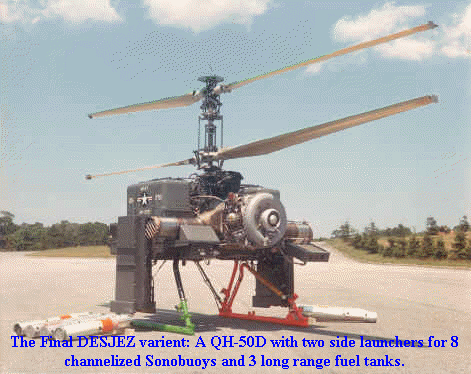 Much, much
to my surprise did I find upon my arrival there, a full and complete set
of true “JEZEBEL” equipment, the same equipment we had tried so hard
to obtain for installation aboard the USS RADFORD during my time in
Hawaii. This equipment had somehow suddenly and mysteriously become
available for installation aboard a DASH equipped ship, at Quonset point,
and I was “directed” by a fellow Gyrodyne employee to begin the
installation on the very next day. Needless to say, and perhaps
overreacting to these events, I became quite upset, upset to the point
that it prompted me to immediately return to St. James and submit my
resignation, thus ending my career with Gyrodyne Company of America. Much, much
to my surprise did I find upon my arrival there, a full and complete set
of true “JEZEBEL” equipment, the same equipment we had tried so hard
to obtain for installation aboard the USS RADFORD during my time in
Hawaii. This equipment had somehow suddenly and mysteriously become
available for installation aboard a DASH equipped ship, at Quonset point,
and I was “directed” by a fellow Gyrodyne employee to begin the
installation on the very next day. Needless to say, and perhaps
overreacting to these events, I became quite upset, upset to the point
that it prompted me to immediately return to St. James and submit my
resignation, thus ending my career with Gyrodyne Company of America.
I
was on several occasions, following my resignation, contacted by Mr.
Papadakos, inviting me to return to St. James to discuss my decision to
leave Gyrodyne. He was very appreciative of the work I had done while with
his company, and I must admit that there were times when I regretted my
decision to respectfully decline his invitation to return. I had in the
meantime, made other commitments to the furtherance of my own career, and
felt the decision to be in my best interest.
It was
several years later that I learned from one of my own employees, a former
Navy person, that there was indeed a system aboard his ship that was
referred to as “DESJEZ”, and that it utilized Sonobouys to detect and
fingerprint submarines from Navies throughout the world.
I was quite pleased.
My post- Gyrodyne years
1969-present (2002)
After
resigning from Gyrodyne in the fall of 1969, I returned to my hometown of
Bristol, Virginia-Tennessee where I established a general electronics
firm. We were engaged in the design, sales, and installation of
sound/intercom systems for schools, offices, industrial complexes, and
other commercial entities. In addition, we designed and installed cable TV
systems, alarm systems, specialized industrial control systems, and
provided contractual installation and maintenance services on computer
batch terminal equipment for a large North American Corporation. This
business eventually evolved into data processing, computer sales and
service, computer networking, and software support and development.
In 1991, I
suffered a disabling stroke, and was forced to retire but after spending
about eighteen months in both supervised and unsupervised rehabilitation
learning to walk and to perform other menial physical tasks, I regained
about ninety percent of my former physical abilities. My golf handicap
soared from two up to a six, but under the circumstances, I am very
comfortable with that.
After regaining
much of my former physical ability, I began to assist one of my former
customers, a fairly large and locally based pizza firm, with their
continued efforts to “computerize” their entire business. I have
continued to provide them with consulting services over the past nine
years in the areas of program development, hardware procurement,
installation, communications, and maintenance. The nature of my assistance
to this organization over this period has provided ample time for travel,
boating, fishing, golfing, and many other leisure activities.
Under the aforementioned circumstances, I found it somewhat difficult to
totally and entirely cease all work related activities until just one
month ago, shortly past my seventieth birthday, when I totally retired. My
near term plans include an initial short cruise in the boat along the
intracoastal waterway of North Carolina, with thoughts toward extending
that venture perhaps to areas much farther south. My wife, Patricia and I
physically reside still in our hometown of Bristol, Tennessee, but I
believe our hearts and minds will always remain in Hawaii. There is a
possibility that we will return for the third time since 1968 to celebrate
our fiftieth wedding anniversary this year.
|
|

My Time as Buyer and Major Subcontract
Administrator
By Ed Delp, (1960 to 1965 )
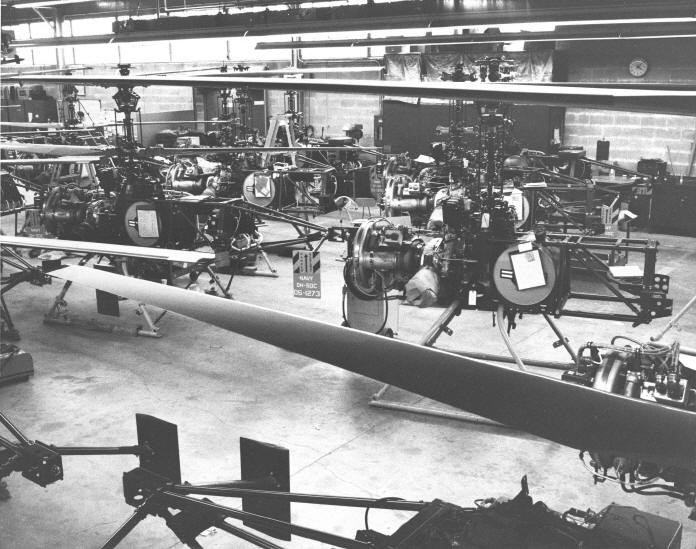 We
were all preparing for series of negotiations to make the necessary awards
for the contract and the Cost Analyst assigned to me (Joe, don’t remember
his last name) and I were assigned to go to Motorola and then Babcock as the
first team out because Mr. Peter J. Papadakos (President of Gyrodyne) Dad
didn’t think anyone could be successful negotiating with either of them. The
next negotiations were to be at Lear Siegler in Santa Monica. We
were all preparing for series of negotiations to make the necessary awards
for the contract and the Cost Analyst assigned to me (Joe, don’t remember
his last name) and I were assigned to go to Motorola and then Babcock as the
first team out because Mr. Peter J. Papadakos (President of Gyrodyne) Dad
didn’t think anyone could be successful negotiating with either of them. The
next negotiations were to be at Lear Siegler in Santa Monica.
The Program Manager at Motorola, Bob Blackert, had been
told on previous occasions that only PJP could approve purchases. I had
Motorola at a point where a bid in the $4000 plus range was now in the $3000
plus range, each for 300 plus units, and I structured a memorandum of
agreement which Motorola agreed to but Bob said that he needed to have
Peter’s approval that day or the agreement was off the table. It was already
late in Phoenix, but Bob had a number that was good to reach Peter when
there was something important to talk about. He got Peter on the phone and
explained where we were followed by the agreed to price followed by
questioning who could sign the agreement, a couple of “yes Peter”’s
and an “Ed, Peter wants to talk to you”. I got on the line and he said, in a
very happy way, “Sign the f_____g thing yourself”.
He then asked me where I was going next and I told him
Babcock to which he said to call him when we were finished. I had a similar
experience at Babcock at a lower price level (around $2000 down to just
under $1000 as I remember) and when I talked to him he said he knew that
Lear Siegler wasn’t my supplier but asked if I would I join the negotiating
team. The reason I even bring this part up is something about your father
that not enough people knew or understood. The month was December and I told
him that my wife was pregnant and due in the not too distant future. His
response was to tell me that my wife was much more important and I should
come home. My son was born on January 22nd. I already had a great respect
for Mr. Papadakos as a business man, I then acquired a great respect for him
as a human being. Gyrodyne still stands as the number one experience in my
career followed years later by my 13 years at Northrop which never would
have happened without Mr. Papadakos and Gyrodyne.
Hope I haven’t bored you with this, it will never be boring
to me.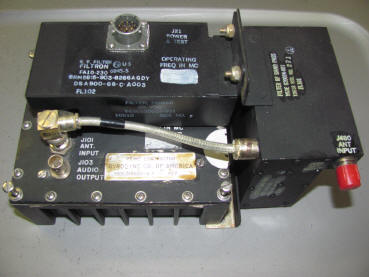
Ed Delp
April 3, 2011
P.S. – I was over in the Quality building looking at a dead moth that the
inspector found inside of a decoder, trying to figure out how we could have
a little fun with it (avionics bug). They always had music playing on a
radio, loud enough for everyone to hear the music, when a news flash came on
announcing that President Kennedy had just been shot. Funny, some of the
things you never forget.
Finally, I love the Gyrodyne Foundation; they bring back
lots of good memories. The original flotation gear pressure cylinder was
made by a company in LA and there was a very senior citizen who was the only
one that seemed to be able to weld the two halves with any repeatable
success. Of course, the decoder and receiver (shown right) (Motorola and
Babcock) were two of my babies
|

|
Remembering the
Machine Shop
By George M. Kowalchuk, Machinist (1962 - 1972)
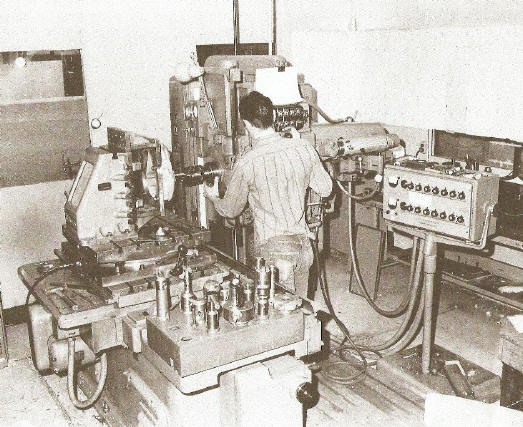 The accompanying photograph of me was taken on January 28th, 1970 in
Gyrodyne's climate controlled jig boring / jig milling room attached to
its general machining facility. In this area, the final steps of the
manufacturing process were completed on all parts requiring very close
tolerance finish machining (pitch horns, bell and transmission housings,
etc.) along with experimental projects and model crafting. The machine
pictured is a DeVlieg Spiramatic Jig Mill in process of cutting a
retaining ring groove in a transfer housing.
The accompanying photograph of me was taken on January 28th, 1970 in
Gyrodyne's climate controlled jig boring / jig milling room attached to
its general machining facility. In this area, the final steps of the
manufacturing process were completed on all parts requiring very close
tolerance finish machining (pitch horns, bell and transmission housings,
etc.) along with experimental projects and model crafting. The machine
pictured is a DeVlieg Spiramatic Jig Mill in process of cutting a
retaining ring groove in a transfer housing.
At one
of the Company's periodic meetings, I believe it was in 1969, Mr.
Papadakos (the President of Gyrodyne) presented a film to employees of
scenes taken by a camera aboard a modified drone during a photo
reconnaissance mission in Vietnam. As he narrated the film and described
its content in detail, I realized that this drone was carrying the
prototype camera / machine gun mount I had finished machining a few weeks
before. I recall noticing the design engineer, drawings spread over every
available flat surface, anxiously giving them a last minute review. I was
also quite nervous since this mount was to be on its way to Viet Nam that
very night. It went on its way without a hitch and not long after, two
helicopters were made completing the Qh-50 production (Aug. 29, 1969).
Much of the work on the Heavy Lift Helicopter Model (HLH competition) was
done on Moore Vertical Jig Boring Machines.......This model was quite
detailed with functioning parts (blades, winch assembly, and sky crane
type of framework).......I've often wondered if the model survived the
years.
By 1972 I was one of only five remaining employees and a typical work day
included refurbishing buildings, ground maintenance, occasionally
repairing or manufacturing Drone parts, and lest I forget.....climbing
that scary eighty-foot-high steel ladder to the catwalk atop the now
obsolete drone suspension test rig (T-Rig). The light bulbs in the
aircraft-warning-lights had to be changed periodically and I was the guy
who inherited the job after Andy-The-electrician was laid off.
After a long talk with Mr. Papadakos in which he offered additional job
security restoring "The Cottage" (where Navy representatives and Vendors
met with GCA representatives) to its former glory but no promise of any
increase in salary, I left GCA, along with Harold Jayne, a line technician
who had worked closely for years with Andy Dinkel, Jack Gonzales, and
George Schwears and Bob Chmiel....At that point, ten years had gone by
since my hiring and the work force, that I believe once totaled close to a
thousand, had dwindled to three.
I
passed by the Gyrodyne property a while ago and could have sworn I saw
Pete Ackles and the dog.
George M. Kowalchuk
(Sent by U.S. Mail - Posted March 16, 2011)
|
|

|
Remembering Don Anderson, Electrician
(1964-1972)
By Alan Anderson
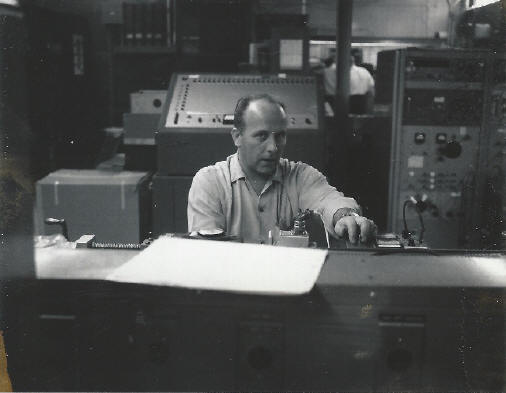 My
Father, Don worked in the electrical shop at Gyrodyne Company of
America, providing support to the assembly line in Bldg 7, and also the
flight test cells at the Air Strip and at Bldg 18 (Helipad). My
Father, Don worked in the electrical shop at Gyrodyne Company of
America, providing support to the assembly line in Bldg 7, and also the
flight test cells at the Air Strip and at Bldg 18 (Helipad).
Don fabricated and installed wiring harnesses,
instrumentation consoles (per photo), command and control equipment for
the QH-50 Drones. He was dispatched a few times to support on-ship
installations aboard Navy Destroyers anchored in the Long Island Sound
awaiting the upgrades.
 In the
summer of 1971 Don was assigned to support flight tests out at Indian
Springs (now Creech AFB)/ Mercury, Nevada. The Anderson and George
Schwears families both traveled to Las Vegas. Don and George supported
with flight test activities during that entire summer. Don was employed
at Gyrodyne from 1964 to 1972 and endured the big lay-off when QH-50
Production ended in 1969. He staying on until only a few employees where
left. He assisted with lawn and grounds maintenance along with general
facility maintenance. Don had the high catwalk detail on the T-Rig
Cells, climbing the towers to change out the warning lights. Upon be
laid off that high wire act was passed onto George Kowalchuk as noted in
his story of "Andy the electrician". In the
summer of 1971 Don was assigned to support flight tests out at Indian
Springs (now Creech AFB)/ Mercury, Nevada. The Anderson and George
Schwears families both traveled to Las Vegas. Don and George supported
with flight test activities during that entire summer. Don was employed
at Gyrodyne from 1964 to 1972 and endured the big lay-off when QH-50
Production ended in 1969. He staying on until only a few employees where
left. He assisted with lawn and grounds maintenance along with general
facility maintenance. Don had the high catwalk detail on the T-Rig
Cells, climbing the towers to change out the warning lights. Upon be
laid off that high wire act was passed onto George Kowalchuk as noted in
his story of "Andy the electrician".
After the layoff the family decision was made to head
west, moving from home in Lake Ronkonkoma in the early summer of '72.
Arriving in Phoenix, and finding that work for out of staters was
impossible to get during those years. Pushing on to California he worked
at Datron Systems Inc. in Northridge Ca.
After a few years he hired on with Northrop in 1975. Don was a
instrumentation electrician, wiring up cockpit systems and harnesses,
supporting a number of aircraft on the production lines and check out
areas. Through the years, supporting various aircraft programs, T38, F5,
F20 Tiger Shark, F18, F23 prototype and finally retired in 1987 while on
the B-2 Bomber project located at the southbase flight test complex at
Edwards AFB Ca.
After residing in Lancaster Ca. for a number of years, he moved to
Tehachapi. Enjoying some restful times and his much enjoyed trailering
around the states for a few years RVing. He passed in January 1992. He
would at times reminisce about the QH-50 DASH drone program he helped
with at Gyrodyne, commenting how that project at that time was 30 years
ahead of its time! As a side note before Gyrodyne, he also worked
at Arma Corporation and also Republic Aviation.
As a lad he raced stock cars at Dexter Park, Queens and Freeport
Stadiums. Fun times for a young lad from Jamaica N.Y.
From the Don Anderson family, Tehachapi Ca.; August 3, 2014
|
|

|
|
|
|
Were working on more! Please be patient! If you are
a former employee, please submit your Gyrodyne "memory" to the
following address (not a hyperlink):
Gyrodyne_History@Yahoo.com
|

            

|
